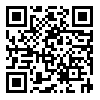

Volume 22, Issue 1 (7-2025)
ASWTR 2025, 22(1): 37-43 |
Back to browse issues page
Download citation:
BibTeX | RIS | EndNote | Medlars | ProCite | Reference Manager | RefWorks
Send citation to:



BibTeX | RIS | EndNote | Medlars | ProCite | Reference Manager | RefWorks
Send citation to:
Darban Hagh S, Behnia S, Fathizadeh S. Stability Control of Lipid Microbubbles in Therapeutic Ultrasound: A Lyapunov Exponent Approach for Non-Newtonian Biological Media. ASWTR 2025; 22 (1) :37-43
URL: http://icml.ir/article-1-680-en.html
URL: http://icml.ir/article-1-680-en.html
Abstract: (676 Views)
Introduction: Lipid microbubbles are crucial in modern medicine, in modern medicine as ultrasound contrast agents and as carriers for drugs and genes. However, the dynamic stability of these bubbles under the influence of physical parameters such as acoustic pressure, ultrasound frequency, and ambient temperature remains a major challenge in clinical applications. This study investigates the dynamic stability of microbubbles in non-Newtonian environments using Lyapunov exponent analysis.
Methods: In this study, the Ferrara-Kane mathematical model was used to simulate the dynamics of lipid-coated microbubbles. The nonlinear differential equations governing the system were solved numerically, and the effects of key parameters—such as acoustic pressure (0.1 to 5.2 MPa), frequency (1 to 5 MHz) , and temperature (295 to 350 Kelvin)—on the system's chaotic behavior were analyzed. The Lyapunov exponent was used as a quantitative criterion to assess the system's stability.
Results: The results showed that increasing acoustic pressure and temperature leads to chaotic behavior (positive Lyapunov exponent), while higher frequencies (above 3 MHz) enhance system stability. Additionally, the critical bubble radius for the stability-to-chaos transition was found to be approximately 2 μm. These findings define optimal parameter ranges for controlled microbubble excitation in sonoporation applications.
Conclusion: This study demonstrates that dynamic stability analysis of lipid microbubbles using Lyapunov exponents provides a powerful tool for optimizing therapeutic parameters. These results can aid in designing more precise protocols for targeted drug delivery and improving the efficiency of ultrasound-based therapies.
Methods: In this study, the Ferrara-Kane mathematical model was used to simulate the dynamics of lipid-coated microbubbles. The nonlinear differential equations governing the system were solved numerically, and the effects of key parameters—such as acoustic pressure (0.1 to 5.2 MPa), frequency (1 to 5 MHz) , and temperature (295 to 350 Kelvin)—on the system's chaotic behavior were analyzed. The Lyapunov exponent was used as a quantitative criterion to assess the system's stability.
Results: The results showed that increasing acoustic pressure and temperature leads to chaotic behavior (positive Lyapunov exponent), while higher frequencies (above 3 MHz) enhance system stability. Additionally, the critical bubble radius for the stability-to-chaos transition was found to be approximately 2 μm. These findings define optimal parameter ranges for controlled microbubble excitation in sonoporation applications.
Conclusion: This study demonstrates that dynamic stability analysis of lipid microbubbles using Lyapunov exponents provides a powerful tool for optimizing therapeutic parameters. These results can aid in designing more precise protocols for targeted drug delivery and improving the efficiency of ultrasound-based therapies.
Educational: Research |
Subject:
General
Received: 2025/05/9 | Accepted: 2025/06/17 | Published: 2025/06/22
Received: 2025/05/9 | Accepted: 2025/06/17 | Published: 2025/06/22
References
1. Barney, C.W., et al., Cavitation in soft matter. Proceedings of the National Academy of Sciences, 2020. 117(17): p. 9157-9165. [DOI:10.1073/pnas.1920168117] [PMID] []
2. Subhan, A., A.-H.I. Mourad, and Y. Al-Douri, Influence of laser process parameters, liquid medium, and external field on the synthesis of colloidal metal nanoparticles using pulsed laser ablation in liquid: a review. Nanomaterials, 2022. 12(13): p. 2144. [DOI:10.3390/nano12132144] [PMID] []
3. Yan, Y., et al., Brain delivery of curcumin through low-intensity ultrasound-induced blood-brain barrier opening via lipid-plga nanobubbles. International Journal of Nanomedicine, 2021: p. 7433-7447. [DOI:10.2147/IJN.S327737] [PMID] []
4. Stride, E. and M. Edirisinghe, Novel microbubble preparation technologies. Soft matter, 2008. 4(12): p. 2350-2359. [DOI:10.1039/b809517p]
5. Hernot, S. and A.L. Klibanov, Microbubbles in ultrasound-triggered drug and gene delivery. Advanced drug delivery reviews, 2008. 60(10): p. 1153-1166. [DOI:10.1016/j.addr.2008.03.005] [PMID] []
6. Gramiak, R. and P.M. Shah, Echocardiography of the aortic root. Investigative radiology, 1968. 3(5): p. 356-366. [DOI:10.1097/00004424-196809000-00011] [PMID]
7. Sirsi, S. and M. Borden, Microbubble compositions, properties and biomedical applications. Bubble Science, Engineering & Technology, 2009. 1(1-2): p. 3-17. [DOI:10.1179/175889709X446507] [PMID] []
8. Wolf, A., et al., Determining Lyapunov exponents from a time series. Physica D: nonlinear phenomena, 1985. 16(3): p. 285-317. [DOI:10.1016/0167-2789(85)90011-9]
9. Lauterborn, W. and E. Cramer, Subharmonic route to chaos observed in acoustics. Physical Review Letters, 1981. 47(20): p. 1445. [DOI:10.1103/PhysRevLett.47.1445]
10. Wu, J., J. Pepe, and W. Dewitt III, Nonlinear behaviors of contrast agents relevant to diagnostic and therapeutic applications. Ultrasound in medicine & biology, 2003. 29(4): p. 555-562. [DOI:10.1016/S0301-5629(02)00789-5] [PMID]
11. Church, C.C., The effects of an elastic solid surface layer on the radial pulsations of gas bubbles. The Journal of the Acoustical Society of America, 1995. 97(3): p. 1510-1521. [DOI:10.1121/1.412091]
12. Parlitz, U., et al., Bifurcation structure of bubble oscillators. Journal of the Acoustical Society of America, 1990. 88: p. 1061-1077. [DOI:10.1121/1.399855]
13. De Jong, N., et al. Characteristics of contrast agents and 2D imaging. in 1996 IEEE Ultrasonics Symposium. Proceedings. 1996. IEEE. [DOI:10.1109/ULTSYM.1996.584339]
14. Qin, S. and K.W. Ferrara, A model for the dynamics of ultrasound contrast agents in vivo. The Journal of the Acoustical Society of America, 2010. 128(3): p. 1511-1521. [DOI:10.1121/1.3409476] []
15. Nosé, S., A unified formulation of the constant temperature molecular dynamics methods. The Journal of chemical physics, 1984. 81(1): p. 511-519. [DOI:10.1063/1.447334]
16. Hoover, W.G., Canonical dynamics: Equilibrium phase-space distributions. Physical review A, 1985. 31(3): p. 1695. [DOI:10.1103/PhysRevA.31.1695] [PMID]
17. Kalová, J. and R. Mareš, Temperature dependence of the surface tension of water, including the supercooled region. International Journal of Thermophysics, 2022. 43(10): p. 154. [DOI:10.1007/s10765-022-03077-y]
18. Phan, T.-H., et al., Thermodynamic effects on single cavitation bubble dynamics under various ambient temperature conditions. Physics of Fluids, 2022. 34(2). [DOI:10.1063/5.0076913]
19. Ghazivini, M., et al., A review on correlations of bubble growth mechanisms and bubble dynamics parameters in nucleate boiling. Journal of Thermal Analysis and Calorimetry, 2022: p. 1-37.
20. Bar, C.P., 2 Hydraulic Oil Density and Viscosity as a Function of Temperature and Pressure.
21. Ferrara, K., R. Pollard, and M. Borden, Ultrasound microbubble contrast agents: fundamentals and application to gene and drug delivery. Annu. Rev. Biomed. Eng., 2007. 9(1): p. 415-447. [DOI:10.1146/annurev.bioeng.8.061505.095852] [PMID]
22. Behnia, S., et al., Nonlinear transitions of a spherical cavitation bubble. Chaos, Solitons & Fractals, 2009. 41(2): p. 818-828. [DOI:10.1016/j.chaos.2008.04.011]
23. Omale, D., P. Ojih, and M. Ogwo, Mathematical analysis of stiff and non-stiff initial value problems of ordinary differential equation using MATLAB. International journal of scientific & engineering research, 2014. 5(9): p. 49-59.
24. Jamali, B., S. Behnia, and S. Fathizadeh, Bubble dynamics: The role of acoustic pressure and temperature on stability and multifractality. The Journal of the Acoustical Society of America, 2025. 157(4): p. 3133-3147. [DOI:10.1121/10.0036458] [PMID]
25. Paul, S., et al., Encapsulated microbubbles and echogenic liposomes for contrast ultrasound imaging and targeted drug delivery. Computational mechanics, 2014. 53: p. 413-435. [DOI:10.1007/s00466-013-0962-4] [PMID] []
Send email to the article author
| Rights and permissions | |
 |
This work is licensed under a Creative Commons Attribution-NonCommercial 4.0 International License. |



